Themed collection Nanomaterials in air

Recent advancements and challenges in the catalytic purification of volatile organic compounds
With the development of industrialization, the emissions of volatile organic compounds (VOCs) are steadily increasing, posing a significant risk to atmospheric quality and public health.

Environ. Sci.: Nano, 2024,11, 4060-4073
https://doi.org/10.1039/D4EN00463A
Photocatalytic NO removal: complete oxidation and reduction reaction for by-product inhibition and end-product recovery
Photocatalysis is an eco-friendly and cost-effective method to realize the purification of ppb-level NO, and the end-product (nitrate/ammonia) of the photocatalytic NO complete oxidation/reduction reaction can be further recycled.

Environ. Sci.: Nano, 2025,12, 67-97
https://doi.org/10.1039/D4EN00715H
Nano-dry-salt deposition on electret nonwoven confers anticoronaviral effect while retaining aerosol filtration performance
Direct deposition of nano-dry-salt on nonwovens was developed as a process that can be incorporated into conventional nonwoven production for timely application of biosafe anticoronaviral surfaces and reliable aerosol filtration performance.
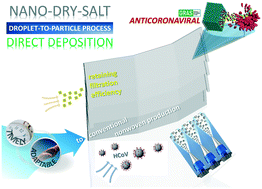
Environ. Sci.: Nano, 2021,8, 2780-2791
https://doi.org/10.1039/D1EN00369K
Enhanced VOC recycling by nano-Fe/FeOx decorated nanoporous carbon
A multifunctional adsorbent with diversified channels and abundant thermal effect sites provides efficient adsorption–desorption diffusion for VOC recycling, which plays a significant role in mitigating VOC emissions and reducing health risks.

Environ. Sci.: Nano, 2025,12, 2309-2319
https://doi.org/10.1039/D5EN00019J
Catalytic reduction of SO2 by Gd@CeOx catalysts: stability enhancement and structural modulation
The production of sulfur by catalytically reducing SO2 with CO presents a promising approach for utilizing sulfur oxides found in flue gases.

Environ. Sci.: Nano, 2025,12, 1262-1272
https://doi.org/10.1039/D4EN01156B
Mechanistic insights into the adsorption of different types of VOCs on monolayer MoS2via first-principles approaches
The underlying mechanism that correlates adsorption energy with both the specific volatile organic compound (VOC) category and the carbon chain length on the MoS2 monolayer is elucidated through DFT calculations.

Environ. Sci.: Nano, 2025,12, 1230-1239
https://doi.org/10.1039/D4EN00953C
Characterizing airborne nanoparticles in six Chinese cities based on their interactions with natural air ions
The airborne nanoparticles in six cities were characterized and their interactions with air ions were investigated.

Environ. Sci.: Nano, 2025,12, 1138-1149
https://doi.org/10.1039/D4EN00796D
Multifunctional textured graphene-based coatings on elastomeric gloves for chemical protection
Wrinkled graphene coatings are engineered to fulfill multiple functions desired for ultrathin gloves that prevent human exposure to chemical toxicants.

Environ. Sci.: Nano, 2025,12, 433-449
https://doi.org/10.1039/D4EN00601A
Scaling-up CO2-selective graphene oxide membranes via sequential coating with gelated graphene oxide and polyethyleneimine for CO2 separation
Increased adhesion between GO layer and substrate by PDA, PEI sequential coating and CO2 affinity due to secondary PEI coating.

Environ. Sci.: Nano, 2024,11, 3992-4006
https://doi.org/10.1039/D4EN00357H
Identifying active sites of Co3O4 catalysts for C2H2 oxidation using combined computational and experimental methods
Combined computational and experimental studies are carried out to unravel the role of active centers on C2H2 oxidation over Co3O4 catalysts.

Environ. Sci.: Nano, 2024,11, 3943-3955
https://doi.org/10.1039/D4EN00358F
A new mechanism for visible light photocatalysis: generation of intraband by adsorbed organic compounds with wide-bandgap semiconductors
A novel mechanism has been revealed by the study that the adsorption of VOC molecules on the surface of semiconductors formed midgap states between the ground state of the VOCs and the conduction band of the semiconductor.

Environ. Sci.: Nano, 2024,11, 2415-2427
https://doi.org/10.1039/D4EN00151F
Zeolite-like ion-exchanged Cu-attapulgite catalysts for promoted selective oxidation of ammonia
Zeolite-like ion-exchanged Cu-attapulgite catalysts have been developed for selective catalytic oxidation of ammonia.
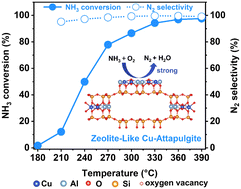
Environ. Sci.: Nano, 2024,11, 2457-2466
https://doi.org/10.1039/D4EN00157E
Interfacial catalytic degradation mechanism of n-hexane over polyhedral Co3O4 nanocatalysts derived from topotactic condensation of ZIF-67
A progressive transition from the L–H model to MvK model is observed, where a polyhedral Co3O4 nanocatalyst enabled by topotactic condensation of ZIF-67 is synthesized for catalytic degradation of n-hexane.
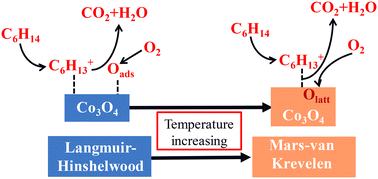
Environ. Sci.: Nano, 2024,11, 2000-2009
https://doi.org/10.1039/D4EN00101J
Constructing a core–shell Pt@MnOx/SiO2 catalyst for benzene catalytic combustion with excellent SO2 resistance: new insights into active sites
The construction of a core–shell Pt@MnOx/SiO2 protective structure catalyst can protect the active Pt site well from SO2 toxicity.

Environ. Sci.: Nano, 2024,11, 1926-1947
https://doi.org/10.1039/D4EN00071D
Nylon fabric coated with a silver nanowire network covered by graphene oxide sheets serves as an electrostatic air filter for highly efficient particulate matter removal
The network of silver nanowires coated with graphene oxide sheets, which are deposited on nylon fabric, will offer valuable information pertaining to the development of an electrostatic air filter for solving air pollution.

Environ. Sci.: Nano, 2024,11, 175-185
https://doi.org/10.1039/D3EN00695F
The heterogeneous reactions of toluene/O3/NH3 on hematite nanoparticles: the impact of light illumination on organic ammonium salt formation
The intensity of light illumination played an important role in the formation of organic ammonium salts on nano-hematite.

Environ. Sci.: Nano, 2024,11, 309-323
https://doi.org/10.1039/D3EN00625E
Efficient and stable CF4 decomposition over θ-Al2O3 with extraordinary resistance to HF
Regulating Al2O3 to θ phase is an effective method for enhancing the stability of CF4 decomposition.

Environ. Sci.: Nano, 2023,10, 3149-3155
https://doi.org/10.1039/D3EN00424D
Experimental and DFT investigations on adsorption–regeneration performance and deactivation mechanism over engineered carbon fiber: role of pore structure and functional groups
Technology based on adsorption of porous carbon is a promising and cost-effective strategy for the recovery of high-value volatile organic compounds (VOCs) or removal of worthless VOCs.
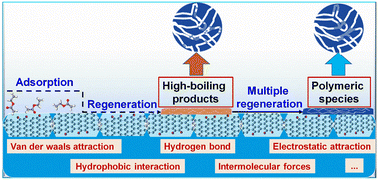
Environ. Sci.: Nano, 2023,10, 2790-2798
https://doi.org/10.1039/D3EN00443K
Pure metallic nanofibrillar membrane for high-performance electrostatic air filtration with antimicrobial and reusable characteristics
We introduce a metallic high-efficiency particulate air (HEPA) filter based on a Cu nanofiber membrane, which grasps particulate matters physically and electrostatically. The filter also shows excellent antimicrobial property and reusability.

Environ. Sci.: Nano, 2023,10, 2437-2447
https://doi.org/10.1039/D3EN00237C
The role of cationic defects in boosted lattice oxygen activation during toluene total oxidation over nano-structured CoMnOx spinel
This study firstly revealed that toluene oxidation activity can be considerably improved by cationic defects rather than oxygen defects over nano-structured CoMnOx.
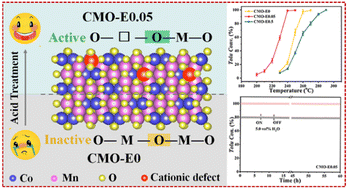
Environ. Sci.: Nano, 2023,10, 812-823
https://doi.org/10.1039/D2EN01066F
Catalytic oxidation of formaldehyde over a Au@Co3O4 nanocomposite catalyst enhanced by visible light: moisture indispensability and reaction mechanism
A Au@Co3O4 core–shell nanocomposite was prepared for the mineralization of formaldehyde under dark conditions and visible-light irradiation. The Au@Co3O4 core–shell nanocomposite has significantly promoted the photocatalytic formaldehyde oxidation.
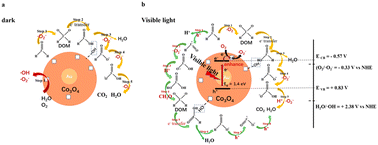
Environ. Sci.: Nano, 2022,9, 4162-4176
https://doi.org/10.1039/D2EN00679K
Catalytic activity, water resistance and stability of hematite nanomaterials in oxidative removal of polychlorinated aromatic hydrocarbons can be simultaneously enhanced through facet engineering
Catalytic activity, water resistance and stability of hematite nanomaterials in oxidative removal of polychlorinated aromatic hydrocarbons can be simultaneously enhanced through facet engineering.
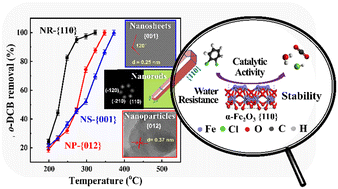
Environ. Sci.: Nano, 2022,9, 3780-3788
https://doi.org/10.1039/D2EN00618A
Raspberry-like TiO2 hollow spheres consisting of small nanocrystals towards efficient NO removal
Raspberry-like hollow spheres consisting of small TiO2 nanocrystals exhibited excellent photocatalytic activity for the removal of nitrogen oxides.
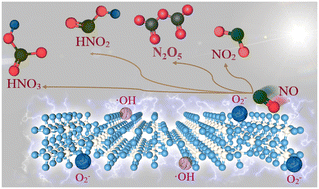
Environ. Sci.: Nano, 2022,9, 3397-3406
https://doi.org/10.1039/D2EN00499B
Heterogeneous reaction of toluene/NO2/O3 on α-Fe2O3 nanoparticles: the impacts of O3, light illumination, and relative humidity on the formation of N-containing organic compounds (NOC)
Light illumination can enhance the NOC formation from heterogeneous processes of toluene whereas water cannot.

Environ. Sci.: Nano, 2022,9, 3318-3330
https://doi.org/10.1039/D2EN00426G
Characterization of nano-scale mineral dust aerosols in snow by single particle inductively coupled plasma mass spectrometry
Mineral dust aerosols in snow were analyzed by single particle ICP-MS with machine learning to classify particle groups.

Environ. Sci.: Nano, 2022,9, 2638-2652
https://doi.org/10.1039/D2EN00277A
Significant impacts of NO2 and NH3 on the sulfate formations on the surface of nano MgO particles in a smog chamber
NO2 played an important positive or negative role in SO2 heterogeneous reactions, however, NH3 always exerted significant positive impacts on SO2 heterogeneous reactions in the three reaction systems of SO2–MgO-dark, SO2–MgO-hν and SO2–MgO–O3.

Environ. Sci.: Nano, 2022,9, 2470-2487
https://doi.org/10.1039/D2EN00142J
Constructing active copper species in Cu-zeolites for coal-gas-SCR and elucidating the synergistic catalytic function of CuO and Cu2+ ion species
Cu-ZSM-5-IE+CP exhibited excellent catalytic performance as a result of the synergistic effect between CuO and Cu2+ species.
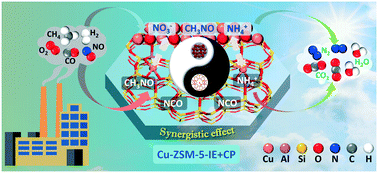
Environ. Sci.: Nano, 2022,9, 2372-2387
https://doi.org/10.1039/D2EN00269H
Gas-phase photoelectrocatalytic oxidation of volatile organic compounds using defective WO3/TiO2 nanotubes mesh
A ducted GPEC reactor equipped with defective WO3/TiO2 nanotube photoelectrodes was developed for VOC removal. Applying a tiny bias voltage promoted rapid carrier transfer and inhibited the recombination of carriers trapped by the bulk OVs.
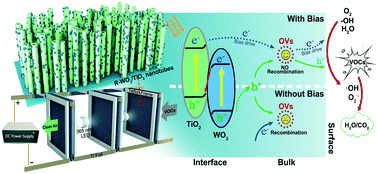
Environ. Sci.: Nano, 2022,9, 2172-2181
https://doi.org/10.1039/D2EN00130F
SO2-Tolerant catalytic reduction of NOx by confining active species in TiO2 nanotubes
SO2-Tolerant catalytic reduction of NOx was demonstrated by confining active species in TiO2 nanotubes.

Environ. Sci.: Nano, 2022,9, 2121-2133
https://doi.org/10.1039/D2EN00144F
Near-infrared light induced adsorption–desorption cycle for VOC recovery by integration of metal–organic frameworks with graphene oxide nanosheets
A photodynamic GO@MIL-101 adsorbent was presented by growing several isolated MIL-101 nanoparticles onto GO nanosheets, which was able to realize the complete desorption of VOCs within 60 min under UV-vis-NIR light irradiation.
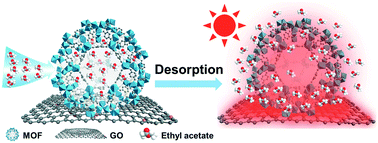
Environ. Sci.: Nano, 2022,9, 1858-1868
https://doi.org/10.1039/D2EN00103A
Antagonistic role of Al3+ against PM2.5-induced neurotoxicity via suppression of NADPH oxidase-triggered oxidative stress
The relationship between PM2.5 compositions and neuron toxicity was explored and Al3+ was revealed to be antagonistic to other pollutants by decreasing the combined toxic effects.
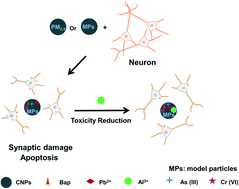
Environ. Sci.: Nano, 2022,9, 1064-1075
https://doi.org/10.1039/D1EN00954K
A theoretical perspective on the structure and thermodynamics of secondary organic aerosols from toluene: molecular hierarchical synergistic effects
The molecular hierarchical synergistic effects of toluene photooxidation are elucidated to explain the formation mechanism of secondary organic aerosols.
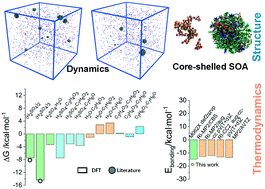
Environ. Sci.: Nano, 2022,9, 1052-1063
https://doi.org/10.1039/D1EN00959A
The photocatalytic NO-removal activity of g-C3N4 significantly enhanced by the synergistic effect of Pd0 nanoparticles and N vacancies
Pd0 and N vacancy co-modified g-C3N4 displayed excellent NO-removal activity.
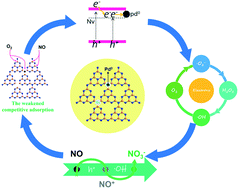
Environ. Sci.: Nano, 2022,9, 742-750
https://doi.org/10.1039/D1EN00937K
Identification and quantification of anthropogenic nanomaterials in urban rain and runoff using single particle-inductively coupled plasma-time of flight-mass spectrometry
Urban rain and runoff are potential sources of anthropogenic nanomaterials (engineered and incidental, ENMs and INMs) to receiving waterbodies.

Environ. Sci.: Nano, 2022,9, 714-729
https://doi.org/10.1039/D1EN00850A
About this collection
This web collection includes research articles published in Environmental Science: Nano featuring applications of nanoparticles in air as well as studies of the effects of nanoparticles and particulate matter on air and respiration.